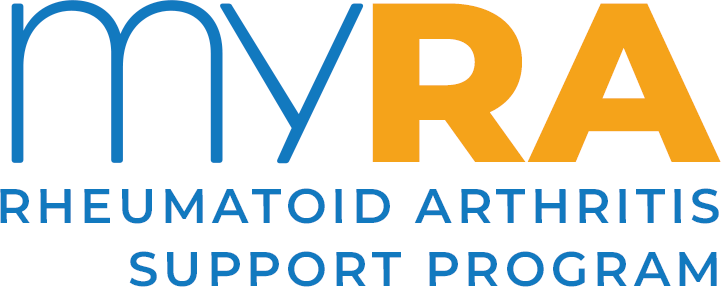
The goals of rheumatoid arthritis (RA) treatment are to:
- Stop inflammation (put your disease into remission)
- Relieve symptoms (e.g. your pain, fatigue and stifness)
- Prevent joint and other organ damage
- Improve physical function and your overall well-being
- Reduce long-term complications
To meet these goals, the your doctor may apply the following strategies:
Early, aggressive treatment
The first strategy is to reduce or stop inflammation as quickly as possible – the earlier, the better.
Targeting remission
Doctors refer to inflammation in RA as disease activity. The ultimate goal is to stop it and achieve remission, meaning minimal or no signs or symptoms of active inflammation. One strategy to achieve this goal is called “treat to target.”
Tight control
Getting disease activity to a low level and keeping it there is what is called having “tight control of RA.” Research shows that tight control can prevent or slow the pace of damage to your joints.
Medications for RA
There are different medicines used in the treatment of rheumatoid arthritis. Some are used primarily to relieve the symptoms of your RA; others are used to slow or stop the course of your disease and joint damage.
Drugs That Ease Symptoms
Nonsteroidal anti-inflammatory drugs (NSAIDs) are available over-the-counter and on prescription. They are used to help ease arthritis pain and inflammation. NSAIDs include such medicines as ibuprofen, ketoprofen and naproxen sodium, among others. For people who have had or are at risk of stomach ulcers, the doctor may prescribe celecoxib, a type of NSAID called a selective COX-2 inhibitor, which is designed to be safer for the stomach. These medicines can be taken by mouth or applied to the skin (as a gel or cream) directly to a swollen joint.
Drugs That Slow Disease Activity
Corticosteroids
Corticosteroid medications, including prednisone, prednisolone and methyprednisolone, are fast-acting anti-inflammatory medications. They may be used in RA to get inflammation under control, while waiting for NSAIDs and DMARDs (below) to take effect. Because of the risk of side effects with these medicines, doctors prefer to use them for as short a time as possible and in doses as low as possible.
DMARDs
An acronym for disease-modifying anti-rheumatic drugs, DMARDs are medicines that work to modify the course of the disease. Traditional DMARDs include methotrexate, hydroxycholoroquine, sulfasalazine, leflunomide, cyclophosphamide and azathioprine. These medicines can be taken by mouth, be self-injected or given as an infusion into a vein in a doctor’s office or hospital.
Biologics
These medicines are a type of DMARD. Biologics may work more quickly than traditional DMARDs, and are injected or given by infusion into a vein in a doctor’s office or hospital. Because they target specific steps in the inflammatory process, they generally don’t impact the immune response as some other RA treatments do. In many people with RA, a biologic can slow, modify or stop the disease – even when other treatments haven’t helped much.
JAK inhibitors
A new subcategory of DMARDs known as “JAK inhibitors” block the Janus kinase, or JAK, pathways, which are involved in the body’s immune response. Tofacitinib belongs to this class. Unlike biologics, it is available as a tablet and does not have to be injected.
Surgery
Surgery for RA may never be needed, but it can be an important option for people with permanent damage that limits daily function, mobility and independence. Joint replacement surgery can relieve pain and restore function in joints badly damaged by RA. The procedure involves replacing damaged parts of a joint with metal and plastic parts. Hip and knee replacements are most common. However, ankles, shoulders, wrists, elbows, and other joints may be considered for replacement.











